A sweet Milestone
Well, we just found this:

Our logo shows up when people look for BLUErabbit in google images. It wasn’t there a couple of days ago! 😀
Thanks for using BLUErabbit! Let’s keep putting #gamification in every classroom!
Well, we just found this:

Our logo shows up when people look for BLUErabbit in google images. It wasn’t there a couple of days ago! 😀
Thanks for using BLUErabbit! Let’s keep putting #gamification in every classroom!
Ok, so what’s the deal with RAMP.
It stands for Relatedness, Autonomy, Mastery and Purpose. The four most important concepts of a #gamification strategy.
However it’s not just that simple. Experts all around the world have proposed several explanations on it. It comes from the Self Determination Theory (SDT) and Daniel H. Pink’s book: Drive. Andrzej Marczewski combined all concepts and it’s the most accepted version around.
In SDT, the core concepts are Autonomy, Competence and Relatedness. In Drive, Autonomy, Mastery and Purpose.
Combining them it ends up as RAMP. Competence and Mastery are pretty much the same thing.
The definition for each concept is this:
Relatedness > The need to connect with others. Connectivity.
Autonomy > The freedom to choose and do what’s in your mind. Independence.
Mastery > The ability to become better at, well, anything. Achievement.
Purpose > The feeling to be part of something bigger than ourselves. Belonging.
Edward L. Deci and Richard M. Ryan, as authors of SDT, were looking for an explanation on what motivates people. They worked even further in the definition of intrinsic and extrinsic motivation.
Now, how does behavioral theories combine with #gamification?
Simple. Games motivate people BETTER than anything else. The reason lies with RAMP. A good game easily offers all core elements to the player.
Now, if you keep your strategy ALWAYS close to RAMP, then everything else will be simpler.
Will post several new things on this analysis 🙂 Let me know your thoughts!

M.B.O. (Mind Behind the Operation)
6th position in the Gamification Gurus Power 100!
Gamification Keynote Speaker & the mind behind the operation @bluerabbit, a gamification platform for education.
Developed three frameworks to teach/learn how to create gamification systems and build gamified content
Declared a world wide war on grades.
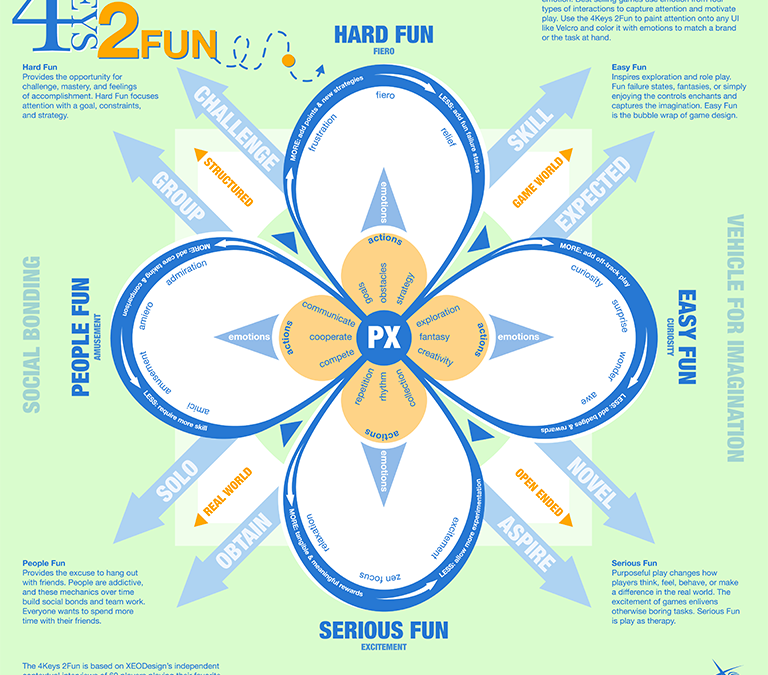
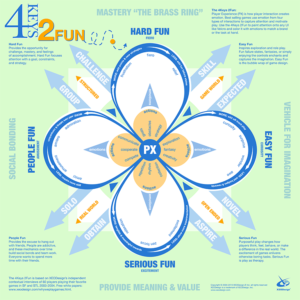 Despite what some #Gamification experts (yes, I’m talking to you Andzrej) fun is an important element. NOW… Andzrej Marczewski is NOT wrong: Fun must be experienced as a consequence of the experience. Do not FORCE it. So, how do you design for it?
Despite what some #Gamification experts (yes, I’m talking to you Andzrej) fun is an important element. NOW… Andzrej Marczewski is NOT wrong: Fun must be experienced as a consequence of the experience. Do not FORCE it. So, how do you design for it?
Nicole Lazzarro made this amazing thing called the FOUR KEYS TO FUN where she explains there are FOUR different kinds of FUN:

M.B.O. (Mind Behind the Operation)
6th position in the Gamification Gurus Power 100!
Gamification Keynote Speaker & the mind behind the operation @bluerabbit, a gamification platform for education.
Developed three frameworks to teach/learn how to create gamification systems and build gamified content
Declared a world wide war on grades.

Knowing you are doing the right thing in #Gamification is really hard when you don’t have the right tools at hand. Now, the first thing you should keep in mind are your KPIs. These little guys will tell if ANY project is going in the right direction, however, one thing is the business side of the system and a different the gamified side. When building your system first hand, before ANY data comes in (which is ultimately the one and only compass you must follow) there are a couple of toys you can use to see the north:
In our Game master framework, the first thing you do is build the game dynamics. Each of them provide a simple question to see if you have dealt with all basic components of a gamified system:
Introduced by Gabe Zichermann, this simple model helps you check that your rewards are in place and well done:
When using SAPS make sure players receive rewards that are well rounded in all FOUR types. STUFF can be perceived as money (and it usually is). Not the best way to reward players because by human nature, MONEY IS NEVER ENOUGH!
 Nicole Lazzarro made this amazing thing called the FOUR KEYS TO FUN where she explains FOUR different kinds of FUN:
Nicole Lazzarro made this amazing thing called the FOUR KEYS TO FUN where she explains FOUR different kinds of FUN:
This part refers to the player types and the differences. Make sure to include them in your design as well. We based our framework in the use of the HEXAD from Andrzej Marczewski. All details can be found in his website and in one of the following posts.
The Hexad covers basically 6 different type of players. Based on the work by Richard Bartle, Marczewski proposes four intrinsically motivated player types and 2 additional ones: The player/user type and the disruptor.
Now, this are just 4 different ways to test your design. We are missing the most crucial one, but we’ll talk about it in another post. This one is already too long.

M.B.O. (Mind Behind the Operation)
6th position in the Gamification Gurus Power 100!
Gamification Keynote Speaker & the mind behind the operation @bluerabbit, a gamification platform for education.
Developed three frameworks to teach/learn how to create gamification systems and build gamified content
Declared a world wide war on grades.
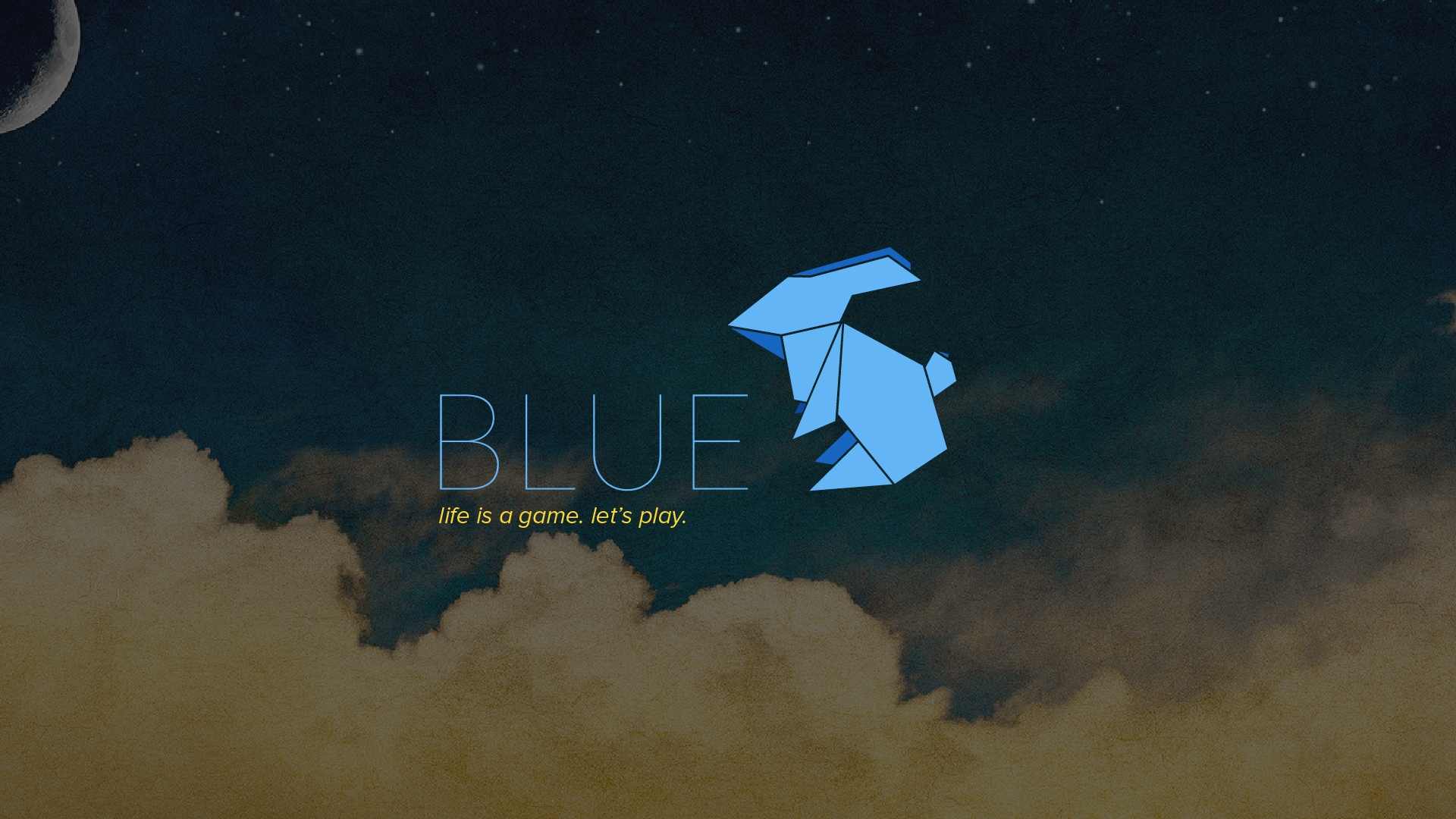
I read this information a while back, but I wanted to share it with you.
Violent GAMES do NOT, I repeat, DO N-O-T, cause aggression.
The full article is here (please, support them by clicking) and you can read even further here
It’s great to know this because the brain KNOWS the difference between killing polygons and people. So please tell your parents about it.
Let everyone know that according to an FMRI study:
Playing violent video games have been linked to long-term emotional desensitization. We hypothesized that desensitization effects in excessive users of violent video games should lead to decreased brain activations to highly salient emotional pictures in emotional sensitivity brain regions. Twenty-eight male adult subjects showing excessive long-term use of violent video games and age and education matched control participants were examined in two experiments using standardized emotional pictures of positive, negative and neutral valence. No group differences were revealed even at reduced statistical thresholds which speaks against desensitization of emotion sensitive brain regions as a result of excessive use of violent video games.

M.B.O. (Mind Behind the Operation)
6th position in the Gamification Gurus Power 100!
Gamification Keynote Speaker & the mind behind the operation @bluerabbit, a gamification platform for education.
Developed three frameworks to teach/learn how to create gamification systems and build gamified content
Declared a world wide war on grades.

The harder for the Game Master, the easier for the players.
This idea came to me as a Dungeons and Dragons Game Master (which is pretty much the one skill you need to become a gamification designer). The thing is that the amount of rules the game master has to know is gigantic. A good Game Master goes on to read at least three complete manuals (that’s aroun 300 pages each) while the player can simply get his character sheet and simply play the game.
When you are a Game Master you have to build scenarios of possibilities. You N-E-V-E-R (and I can’t stress this enough) know how your players will play. They will use your own rules against you whenever possible.
Now, the paradox is there to tell you that the more time you invest in developing a #gamification system the more your players will be able to take from it.
However another thing comes to mind: Rules must be simple. Story however, can be as complex as it may.
Simple is VERY different from easy (golf, bowling, soccer). A simple set of rules will ensure your players stay bound by them without too much thought, but if the story is complex and has many plots and turns, players will focus on it rather than the rules.
Now, if the rules MUST be complicated, then use a tutorial, DO NOT throw all of them at once. If it’s a system that will be played over months or years, take the first three to four weeks to get the players on board (Yes, the ON-BOARDING phase that Yu Kai and Andrzej talk about).
The other problem is that you are NOT dealing with characters in a fictional space where physics don’t apply. You are tending to human beings who are as complex as possible and will seek all opportunities to cheat, game, defeat or whatever the system. It is a common phrase around game designers: “You should always design for cheaters”.
Make sure players can only “cheat” under YOUR terms. Think of the law principle that states that whatever is not forbidden is allowed, so always design with that rule in mind.
Can your players repeat a quest 20 times and level up each time? Should your players figure that out by themselves? Should the difficulty of the game rely on everyone behaving?
People LOVE rules. Rules help us keep it together and make sure to point out who isn’t playing by them.
Remember there is a HUGE line between making mistakes and cheating. One is completely OK, the last one should not allow the players to continue.
Take this four things into account always
What do you think? Is there anything else you should be thinking with this paradox?
Also read The Paradox of Play by Andrzej Marczewski

M.B.O. (Mind Behind the Operation)
6th position in the Gamification Gurus Power 100!
Gamification Keynote Speaker & the mind behind the operation @bluerabbit, a gamification platform for education.
Developed three frameworks to teach/learn how to create gamification systems and build gamified content
Declared a world wide war on grades.
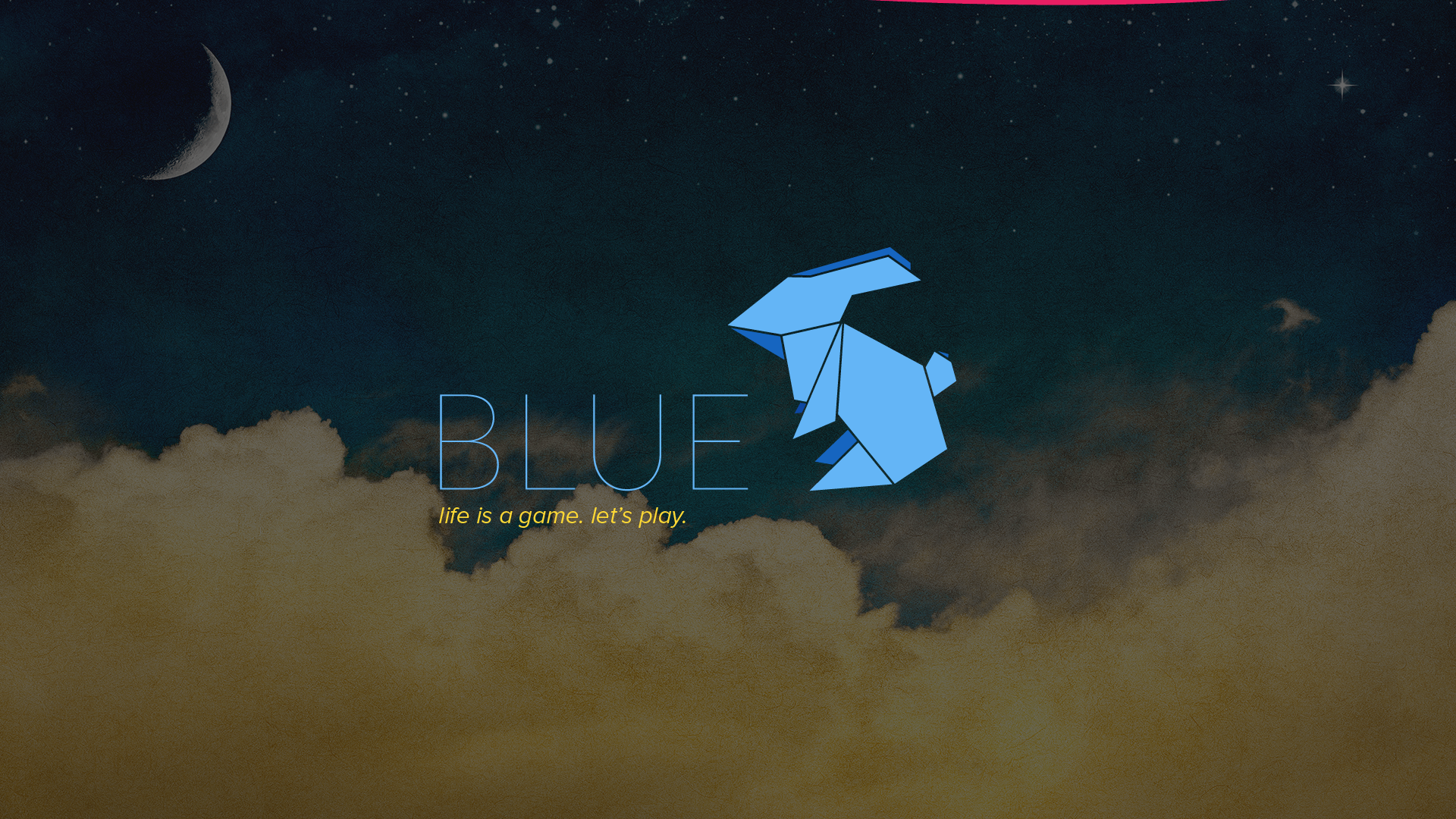
In #gamification we all know about FLOW. That feeling you get when you #almost achieve a goal but feel that you are actually about to get it. In proper terms, FLOW is where the difficulty of a challenge matches the skill of the player, however, I want to talk about how players feel when they almost achieve their goals.
The feeling of fiero, that thing you do with your arms when your team scores a goal or how people feel at the end of a marathon, comes after a lot of hard work and expectation. Normally you can feel this via proxy, but when it comes to building experiences that make the players feel like that is a complete different story.
Trying to explain it through fancy terms as FLOW and FIERO will take a lot of time. The simplest way is to understand how YOU feel when you are attempting something and ALMOST achieve it. When we are faced with a challenge that matches our abilities (or close to match them) we get excited and want to actually do it.
Whatever activity you are havign the players do, make sure it goes according to their level of tolerance to frustration. If something is too hard, you let it go, you feel disappointed and look for easier challenges, if they are too easy, you get bored and lose interest because there is no challenge. That is wher ALMOST sums all I want to say really simple.
As long as the player is ALMOST capable to get the task done, they will want to try as many times as possible. When they finally achieve it then move to the next challenge with the same feeling. The magic number is 3 to 5 times. If it takes more than 5 times to get it right people will usually start feeling frustrated, although this completely depends on the person, 5 is perfectly reasonable. If it takes less than 3, then it might be too easy. This projection escaltes to the amount of challenges that must be easy or hard accordingly. So if 5 or more tasks in a row are super easy, then the player might get bored, but if less than 3 in a row, they might feel its too hard.
This numbers are NOT hard or strict and they should be dynamic. maybe first you give 5 easy tasks, then 2 hard ones then 3 easy then 4 hards and so on… Easy tasks taking one or two attempts and hard ones less than 5 (most of the time)

M.B.O. (Mind Behind the Operation)
6th position in the Gamification Gurus Power 100!
Gamification Keynote Speaker & the mind behind the operation @bluerabbit, a gamification platform for education.
Developed three frameworks to teach/learn how to create gamification systems and build gamified content
Declared a world wide war on grades.
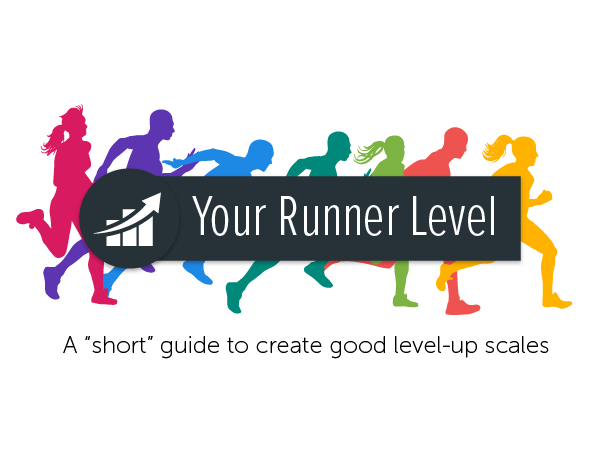
I was thinking about this when talking to my wife about her growth in running. So, to explain how to calculate the progression and levels of your players, I will use some sports as an example. Why sports in #gamifiication? Simple, they aren’t called Olympic G-A-M-E-S because people compete from the office right?
Sports are the best examples on how to apply game mechanics. You should pay close attention and analyze them. It will make wonders for your #gamification design.
Now, defining what level you are, as a sports-person, one would say it’s impossible to put a number to it. Right but wrong. Depending on the type of WIN STATE it can be either easy or complicated to define the level of the players. I will only focus on the WIN STATE that is via GOAL since in a POINTS WIN STATE it gets tricky how to define it, specially if we talk teams (like what’s the level of a soccer player and why is that level).
When a goal has been set, it’s easy to use it as a reference and defining levels becomes really easy.
Let me explain with an image and people who run distance.
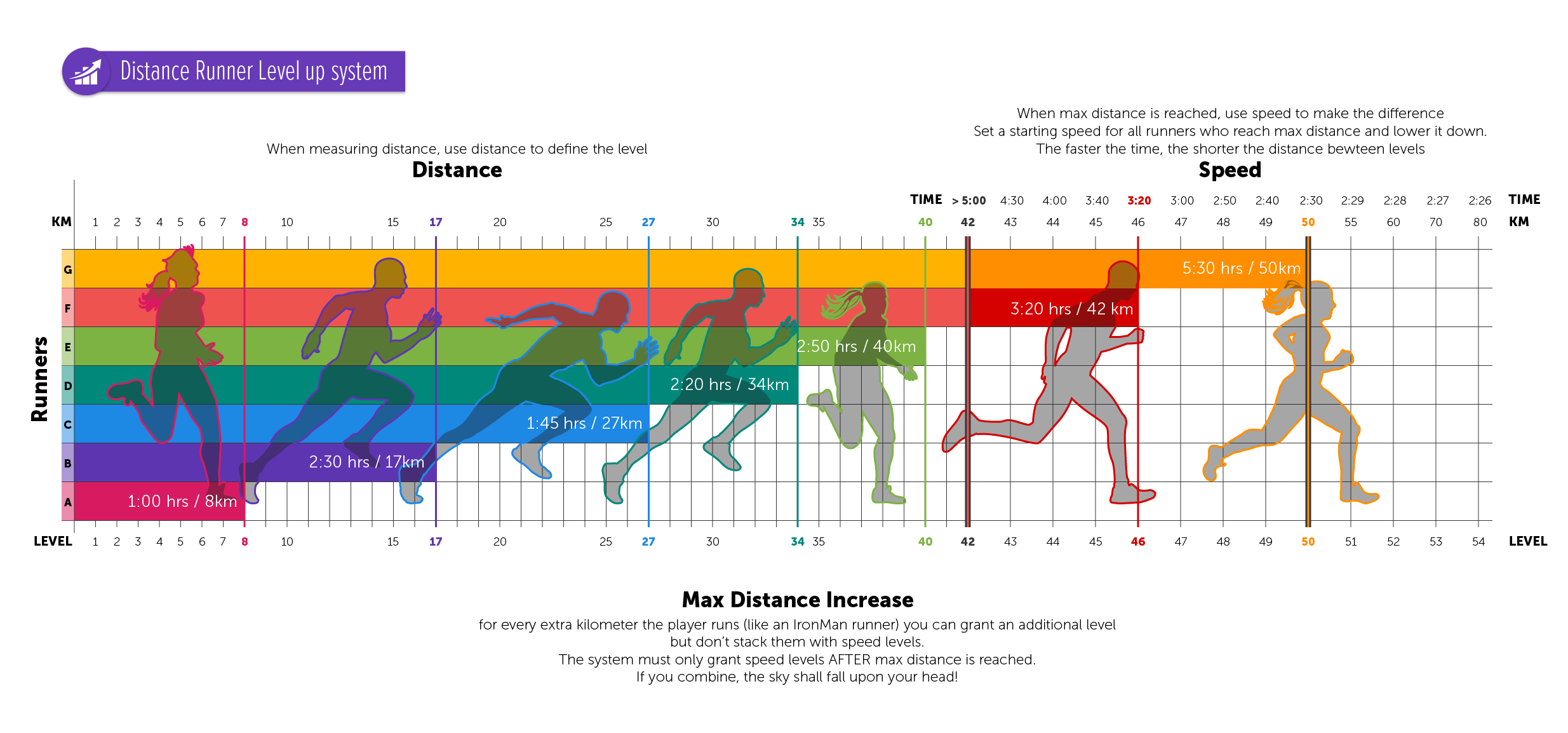
Ok, so the image shows a graph where every KM a player runs gives them a level. It’s easy to define as most runners will train to a marathon or half a marathon.
As long as you define your goal and WIN STATE clearly, you can setup your leveling up system fairly easy if you focus on the CORE ability your players should be developing as they grow.
You can see how TIME doesn’t matter until they cross the MAX DISTANCE line. The red player is a level 46 runner (not 42) as his speed helps him move. However, the orange runner is Level 50 because she ran 50 KM and she is being judged by a longer distance metric.
Now, how to measure the level of the same runners but in terms of speed? Here is another image:
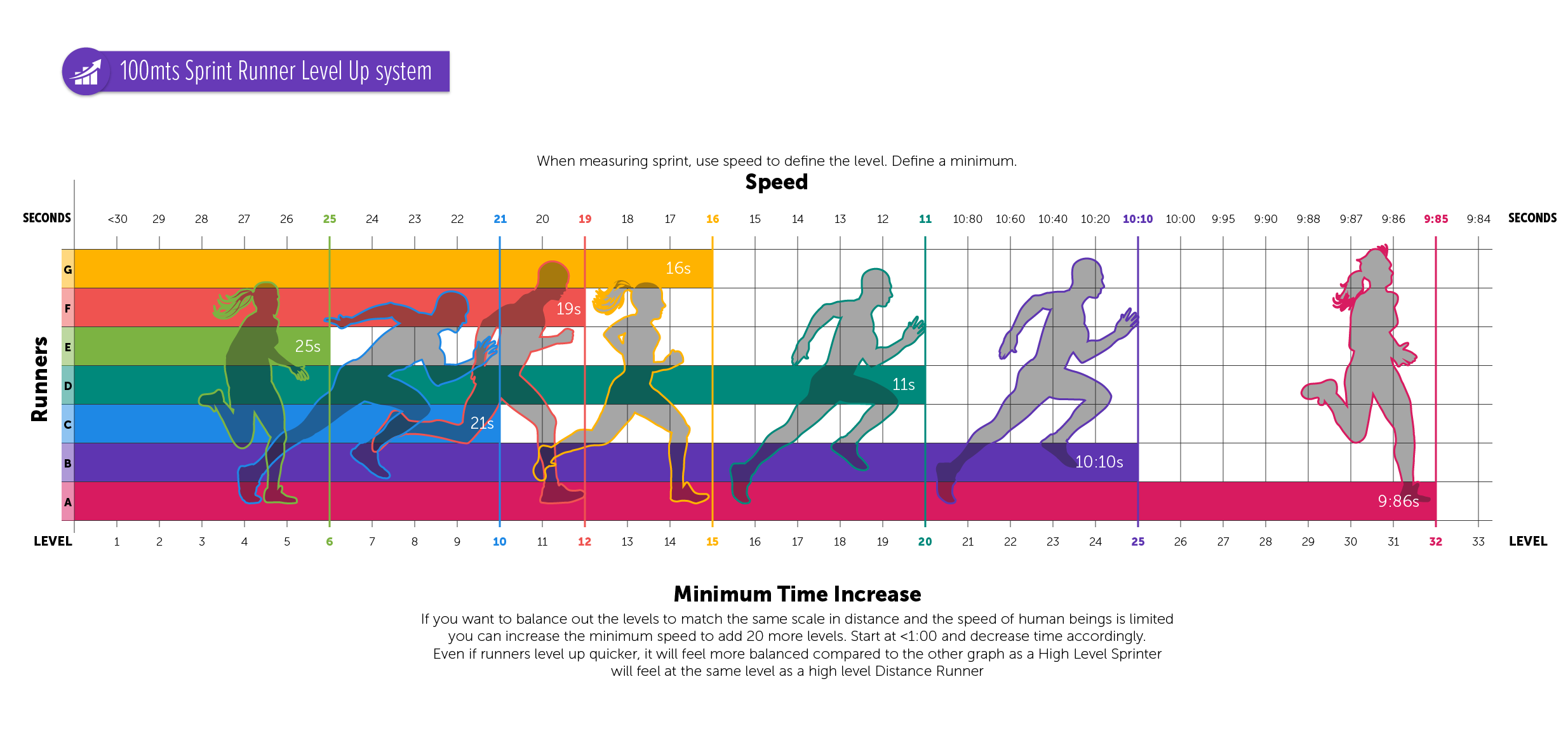
Here we have the same runners but very different results and a different scale of level progression (max level can’t be seen [Usain Bolt 9:58]).
However, in the distance graphic, there is a point where the core element of measure can be swithched to speed to make a difference between high level runners. In the SPRINT, distance is always fixed, so to increase the level the player MUST reduce the speed.
Now, decreasing speed from 30 seconds to 29 is easy but from 9:88 to 9:87 it may be nigh impossible. So you must make sure the scale matches the difficulty of the challenge.
If you are a runner, you will understand this scale immediately and define one that fits what players experience.
Simply put:
If you want players to feel the real progress and experience it fairly, you NEED to know why the levels are there and why you defined such scale.
In the end the player’s profile should be something like this:

I really hope this example can help you define a proper level-up system for your #gamification strategy 🙂
May the force be with you. Let me know what you think via twitter or in the comments 😀
The core idea of gamification is take from games the best concepts and use them in real-life/non-game contexts.
Learning from games is the best thing we can do as experts, as we cannot hope to reveal all the secrets on EVERY single game or think we can possibly build one super game that covers everything, we must take a good look into others and constantly analyze them and take the best ideas from them.
I'vee been playing Diablo III for a while and it is fantastic. I believe that the part that caught my attention the most is the balance of the system.
Despite what many will mention in forums and several discussions around, the game is incredibly well balanced. Now, this is NOT a game review so let's first get started there: What do I mean with balance?
Balancing game systems is not about a great story vs graphics vs gameplay.
It refers specifically on how well every type of character in the game can perform. Meaning that it doesn't matter if you are a wizard or a barbarian, both type of players must be EQUAL.
This is one of the core components in gamification success. A balanced system will let all players feel they are treated fairly while the other hand might have them feel the system is against them.
So, how does Diablo III balances all player classes?
It's actually complex in a mathematical way but incredibly simple from a game designer point of view.
The key lies within the stats of the player. There are SO MANY stats that it becomes absurd trying to learn each of them by heart knowing how much damage your wizard can make against undead which will change completely right after you pick up that brand new wand.
Having MANY stats allow the mathematical balancing of the players be a lot easier because you have room for all player types to perform and experiment with different abilities.
Here's a quick example:
Characters have 4 basic attributes: Strength (STR), Dexterity(DEX), Intelligence (INT) and Vitality (VIT). The easy way is to create 4 classes that depend primarily on each attribute: Barbarian, Demon Hunter, Wizard and Crusader. You realte each of them with an attribute and you get certain balance. Think of it as rock, paper scissors.
STR > DEX > INT > VIT > STR
That way you have a Barbarian beating a Demon Hunter beating a Wizard beating a Crusader beating a Barbarian loop.
Now, as you can see, mathematically it will be complex when you get to 9,803 DEX points, however, understanding that DEX beats INT, all you need to do is a simple equation:
IF (DEX ATTACK > INT DEFENSE) { Damage Wizard = DEX ATTACK - INT DEFENSE }
It may seem a bit to "cody" for some, but it really is a simple question followed by basic math.
Now, how does all this round up against a gamified system.
In #gamification you will be dealing with many personalities. In Diablo you think of them as Character Classes. In your office or classroom they'll manifest in very different ways.
Since you can't measure emotion or learning, you need to build up standard abilities of your players based on their preference and styles. Close the system down to 4 types (usually the most accepted amount in EVERY brain study ever) and make sure that there is the same type of loop.
Reward growth of each ability based on what challenge the player faces: The four types are BLUE, RED, GREEN and YELLOW. If you finish a RED mission, you get BLUE points, you finish a GREEN one, you get RED points. Based on the same principles as before: BLUE > RED > GREEN > YELLOW > BLUE. That way, people will be free to choose their own style and then GROW and PROGRESS based on such style.
Hope I'm not too overboard with explanations here... Hope you like it.
#Gamification IS about analyzing games and making great systems. If you can play ANY game and figure out the mechanics they use and how to take advantage of the rules, you are already a #gamifier.

M.B.O.
Top 15th position in the Gamification Gurus Power 100!
Gamification Keynote Speaker & the mind behind the operation @bluerabbit, a gamification platform for education.
Developed three frameworks to teach/learn how to create gamification systems and build gamified content
Declared a world wide war on grades.

Time should not only be perceived as minutes, seconds or days. In #gamification we see time as a lot more than that.
For instance, the fact that a player has a set number of attempts to overcome a challenge is one thing (which does define the time), however, what if you say “the first to accomplish”.
Time doesn’t have to be set as a number of days, although using normal time might be the easiest thing, in #gamification it just refers to how long, how many times and/or when can the players play.
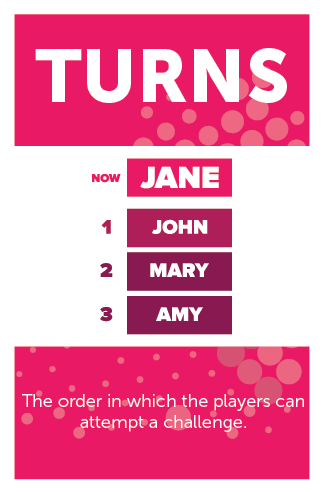
As I said before, turns are a great way to set the time for a challenge. We will all take turns to attempt this, but with the following order.
When you use this #gamemechanic, make sure you are FAIR in how players earn their turn. If it’s a random thing (alphabetical order by last name IS random, nobody chose theirs), make sure everyone has at least one try. You can then offer a sudden death for all those who overcome with the same results or just define the winner by performance.
Turns based games are often slower than others. You have to wait in line for the guy in front to attempt and if there is no time limit to his turn it could be days before your chance. If you are using the “first guy to make it” mechanic and I know I can do it, but the guy in front gets it first even before I attempt it, then it will feel really unfair (you even think he knew before or had help)
Make sure when using turns EVERYONE gets a shot at it, at least once and each attempt is equally fair for all (or at least all players can have the same level of ability before attempting).

One thing is the order in which you attempt and a very different thing is how many times you can try to overcome.
Not much detail to get into, but make sure, as always, to make it fair for everyone. If you are giving three attempts, EVERYONE either gets them or has the ability/possibility to get as many. If you earn attempts depending on performance, make sure it’s available for all and it’s not harder for some.

This #gamemechanic does refer to time as literal.
How many seconds, minutes, hours, days, weeks, months or years does the player have to master the system or overcome a challenge.
Easy to think about it that way, how about thinking a different thing that most people forget:
What is the FASTEST they can do it?
When I started gamifying my classroom, I thought my players will take the whole semester to finish my challenges (ha!). Little did I know about the power and impact #gamification has on high school students. Two months in my players had eaten ALL the content I proudly prepared for the semester and I had no way of feeding their content demand as fast.
The result?
My system collapsed and had to resort to old practices to level the class… sad right?
I learned that defining your time limit BOTH ways is crucial for a system to be successful.
Set boundaries to the time players CAN and HAVE to finish. This way you won’t be surprised by some players saying they went through all the content overnight when you wanted them to go through it for five weeks.

M.B.O. (Mind Behind the Operation)
6th position in the Gamification Gurus Power 100!
Gamification Keynote Speaker & the mind behind the operation @bluerabbit, a gamification platform for education.
Developed three frameworks to teach/learn how to create gamification systems and build gamified content
Declared a world wide war on grades.
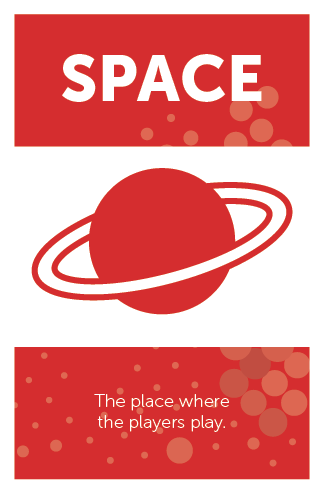

So where are the players playing? Is there a board? An app? A website? An imaginary place on their heads?
Yes, the last one is real, although you would have to define some BOUNDARIES on to what is acceptable, however when thinking of the SPACE where the players play, there are no limits.
Thanks to technology and creativity, players can play through and absolutely ANYWHERE. Don’t restrain yourselft.
Now, in terms fo #gamification and #gamemechanics, we’ve separated three that include each other somehow, so basically you would need to define all three (not hard at all)
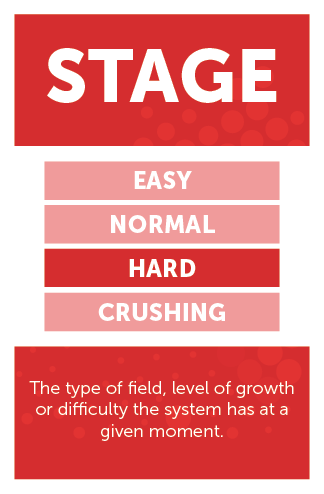
Easy, normal or hard mode are pretty much the easiest way to explain this mechanic. The stage is not physical but environmental. It refers to the type of field the players are in.
An easy way to resemble is the Ice stage vs the Lava stage of a game. It’s not just about difficulty, but about what abilities the players will need to overcome the challenges.
When you offer the players different stages of growth they will try to play where they are best at. So we could make the stage the class the players are in. People often think math is the hard class and art the easy one, but what if we put the same strict rules in both classes. Players who are good at math will think the Math class is easy while art is really hard and others might think P.E. is the hardest.
As long as rules apply to all players equally, the difference in difficulty will not be the STAGE itself, but the preference and abilities of the players.
Now, talking about difficulty would be another thing: If the difficulty level increases, the system should be harder no matter what STAGE you are on (or maybe the stage is not a change of environment but a new challenging level)
Remember to balance it for all players. Here are just some tips on how you can define your STAGES:
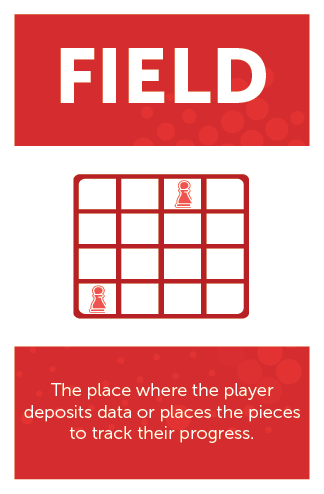
It could literally be a field. Like in sports. However the point is that this is the BIGGER SPACE where the players deposit DATA.
The field is where they literally the place where they play and interact. EVERY SINGLE place where the players can play: the street, the room, the office, the website, the blackboard in a classroom or all of the above.
Think of the field as the playing board. Think big and creatively. There is no limit on where can data be input.
In Dungeons and Dragons, game masters usually put figurines on a board with squares to represent the position of the players, same with chess or pretty much any BOARD game, however the FIELD in Dungeons and Dragons lies within the Game Master’s notebook where he has planned almost every scenario and every PLACE the players will be. So the board can be just squares, but it’s not the field. The field, is the world the players are in.
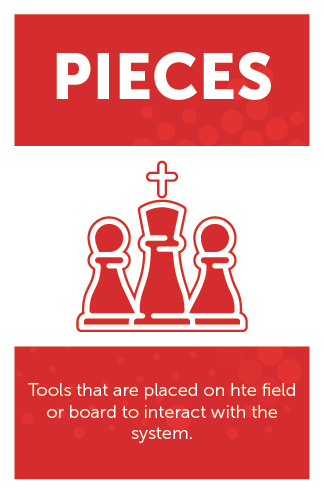
So, how will you track the progress of the player? How do you know if you are winning on chess? How do you know how good you are performing?
The pieces are the tools that will tell the player where they are. In more technical terms, they are tools used to track player’s progress. I know, all #gamemechanics are that right? Yes and no. This refers to a more “physical” element that will show the players their position.
Now, each piece can have their own set of rules (mechanics) and at the same time each piece will give a different piece of data to both, players and system.
I said before that these three #gamemechanics are connected to each other and its most likely you will end up defining all three always. The reason is as follows:
You can’t have a stage without a field without pieces to track where and how the players have grown through it. In a classroom the pieces might be the student standing in front of you (the player) but they could also be those little cardboard pieces you gave them to track their progress.
The virtual currency is not a piece in the field (unless its part of the mechanics), but the hat that tells you where you have to pay rent is. That way, the piece tells the player everything they need to know at that specific moment. The card of the property explaining the amount of money to be paid is another piece in the board.
You put the pieces in the field and let the players feel the stage.

M.B.O. (Mind Behind the Operation)
6th position in the Gamification Gurus Power 100!
Gamification Keynote Speaker & the mind behind the operation @bluerabbit, a gamification platform for education.
Developed three frameworks to teach/learn how to create gamification systems and build gamified content
Declared a world wide war on grades.